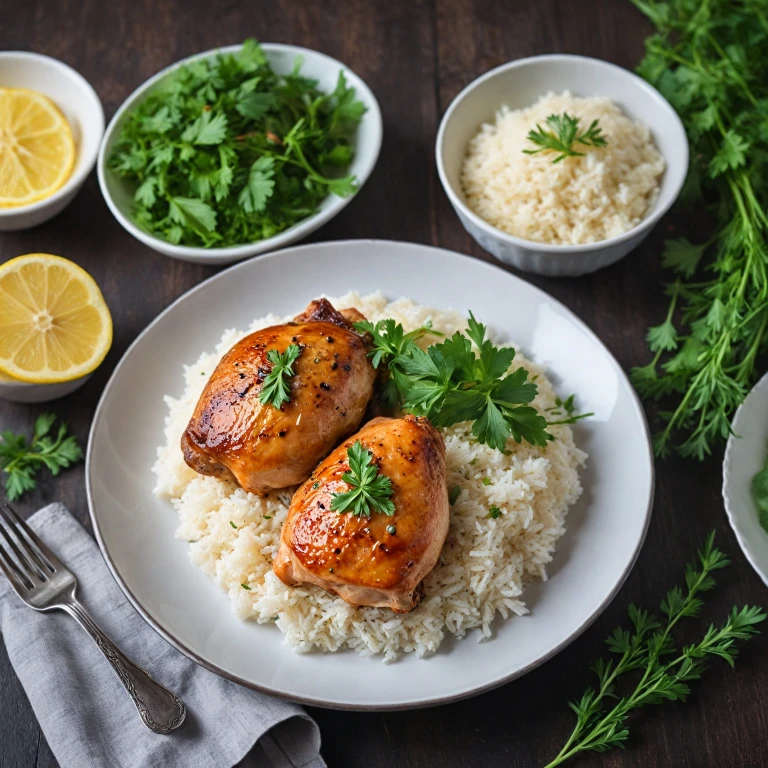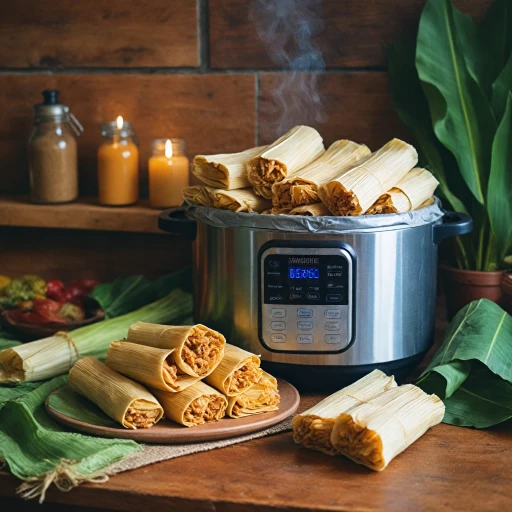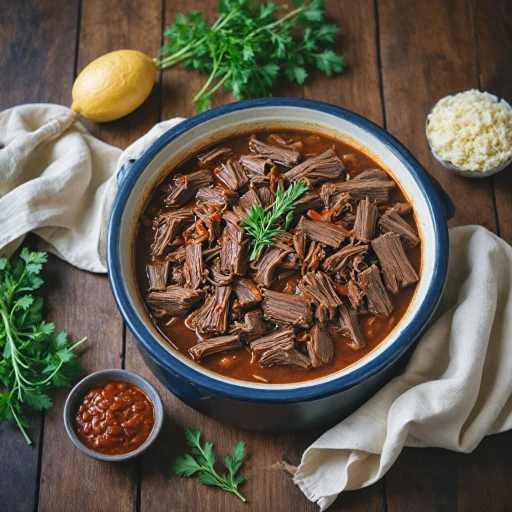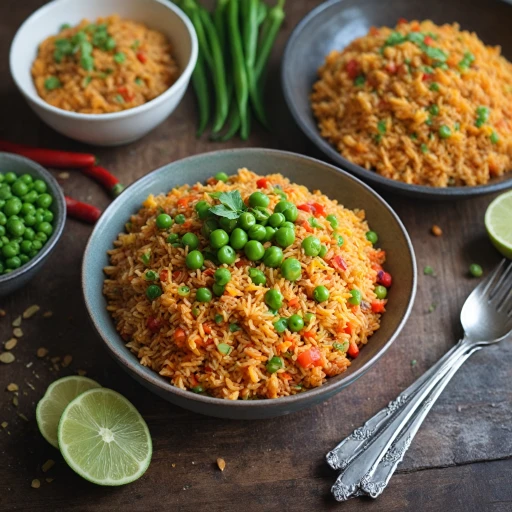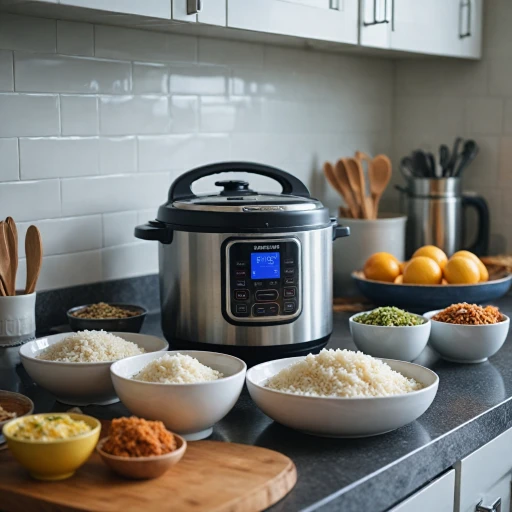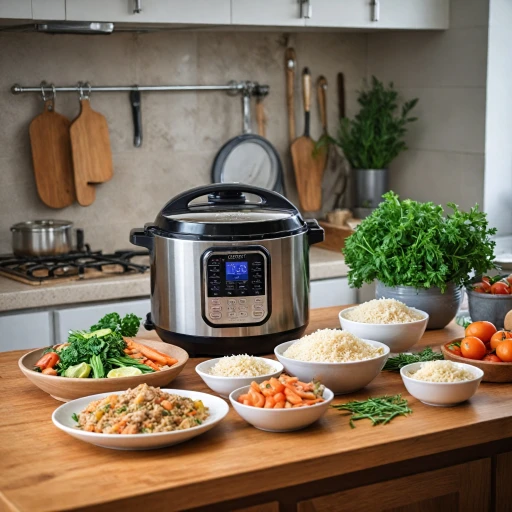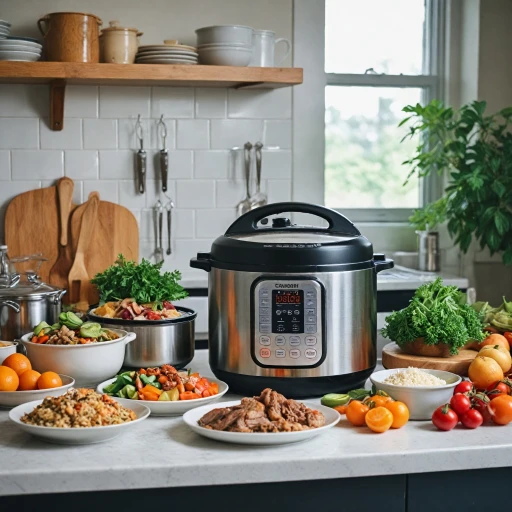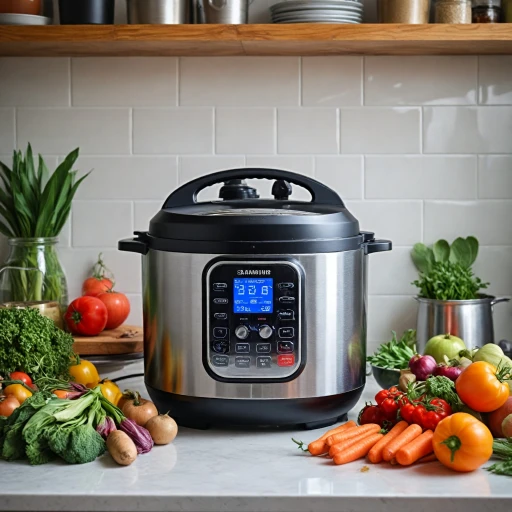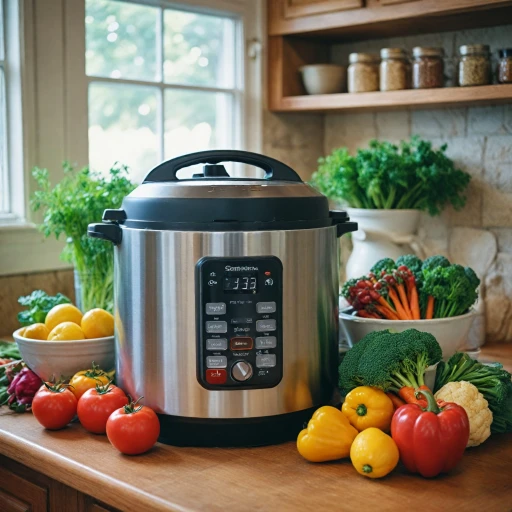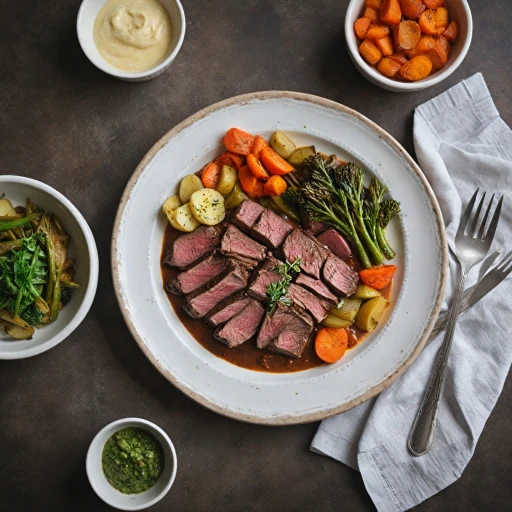
Understanding Your Electric Pressure Cooker
Getting to Know the Marvel of Electric Pressure Cookers
To craft a delightful dish like chicken thighs and rice using an Instant Pot, it’s crucial to familiarize yourself with the capabilities of an electric pressure cooker. The power of this appliance lies in its ability to cook meals quickly while preserving flavor and nutrients.
Modern pressure cookers primarily operate with high pressure, allowing food to cook in a fraction of the usual time. This function is a game-changer when making recipes that involve cooking time-sensitive ingredients like chicken and rice. The pressure created builds up steam, cooking the food faster and intensifying flavors for easy recipes day or night.
A common feature you’ll find in most pressure cookers is the ability to sauté. This allows you to brown chicken thighs in a hint of oil before pressure cooking. Doing so enhances the flavor and improves the overall texture of the meal, a technique that is simple yet elevates the dining experience.
Understanding the various settings and timing is also key. For instance, knowing how many minutes it takes to cook chicken thighs thoroughly or how to avoid overcooking rice can make or break a dish. Using the right quantity of liquids like chicken broth or chicken stock can affect the consistency of the rice, be it white rice or long grain brown rice.
To further enhance your skills and explore a plethora of mouth-watering meals you can create with this versatile kitchen tool, understanding your electric pressure cooker's distinct settings and their respective cooking times is critical.
Choosing the Right Ingredients
Selecting the Finest Ingredients
An electric pressure cooker like the Instant Pot is a versatile kitchen appliance, making the ingredient selection a vital part of any successful recipe, such as chicken thighs and rice. The choice of ingredients not only affects the flavor but also the texture and cooking time, ensuring your meals are both delicious and nutritious.- Chicken Thighs: For a juicy and flavorful outcome, opt for bone-in, skin-on chicken thighs. They contain more fat than chicken breasts, which helps to enhance flavor during cooking. If you prefer a leaner option, chicken breasts can be used but adjust the cooking time accordingly.
- Rice: Both white and brown rice can be used in the Instant Pot, each bringing a distinct texture and taste. For quick cooking, long grain white rice is a great option as it typically takes moins cooking time compared to brown rice. Brown rice, while requiring additional minutes to cook, offers a nuttier flavor and more fiber.
- Stock or Broth: Using chicken broth or stock instead of water elevates the flavor of your rice. This addition adds depth, making your chicken rice irresistible. Ensure you use low-sodium options to better control the salt level in your dish.
- Seasonings: Simplicity can be key. A blend of garlic, black pepper, and a little salt will complement the ingredients without overpowering their natural flavors. You can also add herbs such as thyme or rosemary for an extra aromatic touch.
- Oil: Sauteing the chicken thighs with a bit of oil before pressure cooking will help to brown them, locking in flavor and moisture. Additionally, it allows for a quick flavor boost before sealing the pot.
Preparing Chicken Thighs and Rice for the Instant Pot
Prepping Your Chicken Thighs and Rice for Optimal Results
When aiming to master the art of delicious, tender chicken thighs with perfectly cooked rice, preparation in your Instant Pot is essential. With a few straightforward steps, you can set the stage for a delightful culinary experience. First, focus on the chicken thighs. Whether you're using bone-in or boneless, ensure they're patted dry to allow for an even saute. This step is crucial as it helps achieve that coveted golden crust when you initially saute them in oil within the pot. Adding simple seasoning with salt, garlic, and black pepper will enhance the flavor profile, making for an irresistible dish. Moving on to the rice, determine the type based on your preference—opt for long grain white rice for quick cooking or brown rice for an earthier, more robust taste. Remember to rinse the rice until the water runs clear; this will remove excess starch, preventing a sticky outcome. A critical factor here is the liquid-to-rice ratio. For most rice recipes in pressure cookers, a 1:1 ratio is often advised, but using chicken broth or stock instead of water will intensify the flavor, particularly when cooking it alongside the chicken. Before you begin cooking, consider layering your ingredients in the pot. Start by sauteing the chicken thighs in a bit of oil until browned on both sides. Then, set them aside while you add the rinsed rice, chicken broth, and additional seasonings. Finally, place the chicken back on top of the rice mixture. This sequence aids in even cooking, ensuring the flavors meld together perfectly. For further guidance on how to refine your rice preparation in an Instant Pot, explore our detailed comprehensive guide. By integrating these tips into your routine, you're well on your way to mastering chicken thighs and rice in your trusty Instant Pot.Cooking Techniques for Perfect Texture
Achieving the Right Flavor and Consistency
Cooking in an electric pressure cooker can transform chicken thighs and rice into a delectable dish, blending flavors while maintaining perfect texture. To start, use the sauté function to brown the chicken thighs in a dash of oil. This step enhances flavor and gives a delightful texture to the final dish. Once browned, set them aside.
For the rice, particularly long grain or brown rice, remember that it absorbs flavors exceptionally well. Add garlic and cook until fragrant to release its aroma before adding the rice. This creates a lovely base that complements the chicken.
Pressure Cooking for Tender Chicken Thighs
Place the chicken thighs back into the pot, nestled atop the rice. Then, incorporate chicken broth or stock to infuse the mixture with a richer taste. For chicken rice recipes, keeping the liquid-to-rice ratio precise ensures the grains cook perfectly without becoming mushy.
Set the pressure cooker to high pressure, adjust the cooking time to ensure the chicken thighs cook to tenderness. Typically, cooking time varies around 8 to 10 minutes, but for accurate preparation, check depending on the chicken cut's thickness. Allow the pressure to release naturally for five minutes before transitioning to a quick release to prevent overcooking.
Final Touches and Enhancements
Once cooking is complete, uncover the pot and check the chicken's doneness. The internal temperature should reach a safe level for consumption. If necessary, adjust the seasoning with black pepper or additional salt.
For additional flavor, stir in fresh herbs or sautéed vegetables before serving. This not only enhances taste but also adds a vibrant color to the final dish. Master these techniques, and your pot chicken and rice recipe will consistently be a success, pleasing both the eyes and the palate.
Safety Tips for Using an Electric Pressure Cooker
Stay Safe While Enjoying Delicious Creations
When it comes to using an electric pressure cooker, safety should always be a top priority to ensure a stress-free cooking experience. Here are some essential safety tips that you can follow when preparing your mouthwatering chicken and rice recipes:
- Check Seals and Valves: Before you even turn on your Instant Pot, ensure that the rubber sealing ring is properly in place and free from any residues. Missing or misaligned seals can lead to steam not being retained, which can affect the cooking process.
- Inspect the Pressure Release Valve: Make sure the valve is clean and moves easily. Blocked pressure release valves can prevent pressure from building up or releasing correctly, which could result in overcooked chicken and rice or potential safety hazards.
- Use the Right Amount of Liquid: For your electric pressure cooker to build pressure effectively, it's essential to use the recommended amount of liquid, such as chicken broth or water, based on your chosen recipe. This not only affects cooking time but ensures the appliance can operate correctly.
- Avoid Overfilling: Whether you’re using brown rice or white rice with chicken thighs, avoid filling the pot more than two-thirds full. Overfilling can cause food particles to block the release valves or lead to messy spills, affecting both safety and cooking outcomes.
- Use the Sauté Function Safely: If your recipe calls for sautéing, remember to let the cooker cool down slightly before sealing the lid to begin pressure cooking. Hot oil can cause splatters, so be cautious when using this function.
- Handle with Care Post-Cooking: After pressure cooking your delicious chicken thighs and rice, carefully release the pressure. Use a long tool to switch the valve from sealing to venting to avoid steam burns. Allow the pressure to drop naturally before removing the lid if needed.
By adhering to these safety tips, you ensure a seamless experience with your electric pressure cooker, allowing you to enjoy perfect textures and flavors in your chicken and rice instant pot recipes without any concerns. Implementing these steps will help maximize both the safety and enjoyment of your pressure cooking endeavors.
Troubleshooting Common Issues
Overcoming Common Challenges in Instant Pot Cooking
Using an electric pressure cooker can sometimes lead to unexpected challenges. Understanding potential issues and how to address them can ensure successful chicken rice dishes every time.- Burn Notice: This is a common alert that occurs when ingredients, such as long grain or brown rice, stick to the bottom of the pot and cause the temperature to rise. To avoid this, make sure you have enough liquid, like chicken broth or chicken stock, and add oil to help prevent sticking when you sauté ingredients like garlic and chicken thighs.
- Undercooked Ingredients: If your chicken or rice is underdone, check that you've set the pressure cook time accurately. Adjust cooking time and ensure that you've selected the right high-pressure setting for the recipe you're following. Remember that different ingredients have various cooking times: for instance, white rice tends to require fewer minutes compared to brown rice.
- Sealing Issues: Ensure the sealing ring is correctly positioned and the venting knob is set to the sealing position to maintain the required high pressure for cooking. A poor seal can lead to longer cooking times and improperly cooked dishes.
- Food Sticking: After browning chicken thighs or sautéing spices, deglaze the pot with water or chicken stock by scraping up the browned bits. This prevents sticking and adds more flavor to your dish.
